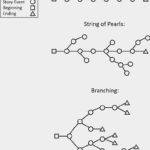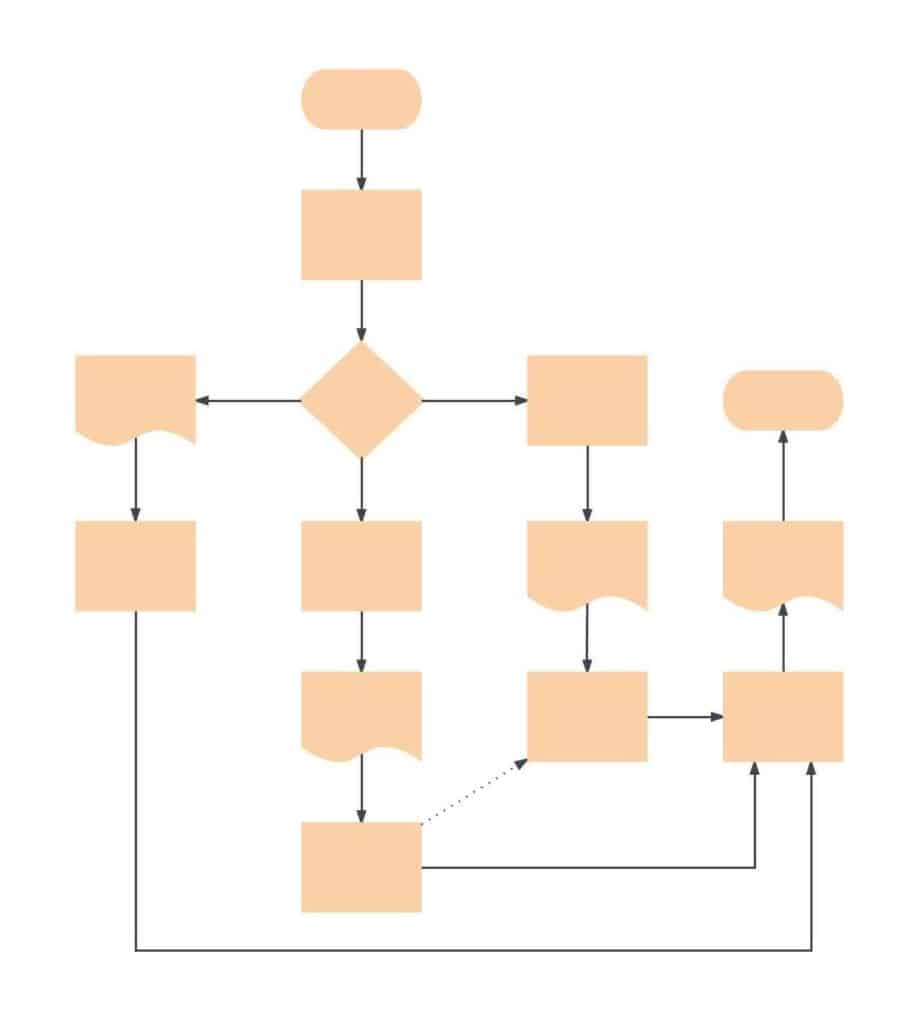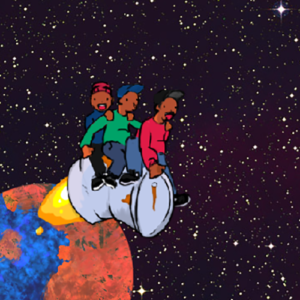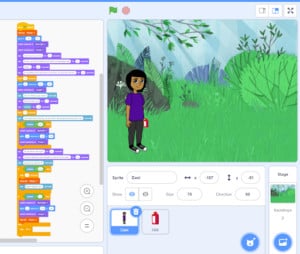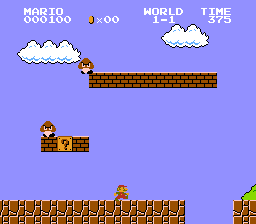Introduction
During this tutorial we will be talking about video game narratives. We will discuss a few common types of narratives and how each is unique. There will also be some tips on how to begin writing your own narrative!
This tutorial is intended to give you an introduction to video game narratives and provide you with a starting point to explore further. This is not an exhaustive discussion but a good place to start for those wishing to begin learning about narrative creation as a hobby or for those who aspire to become video game developers. There is a lot of information available on the topic of video game narrative creation so for this tutorial, I referenced a few sources that are great starting points to explore further:
- The Evolution of Video Games as a Storytelling Medium, and the role of Narrative in Modern Games by Chris Stone at Gamasutra
- How to Write a Good Video Game Story by E.M Welsh
- Practical Guide to Game Writing by Darby McDevitt at Gamasutra
At the end of this tutorial, you may create the beginnings of your own narrative using Twine, similar to this lesson or you may create a narrative for the “Colour Hunt” Scratch game we created in last week’s tutorial. For those who are new to Twine but would like to use it to write your narrative, check out our Introduction to Twine lesson here.
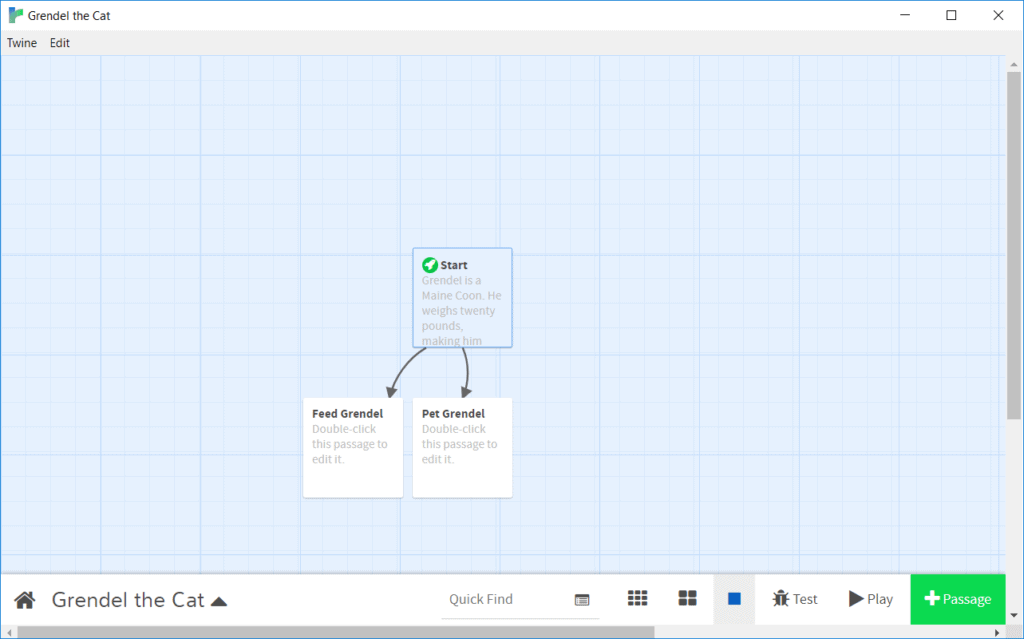
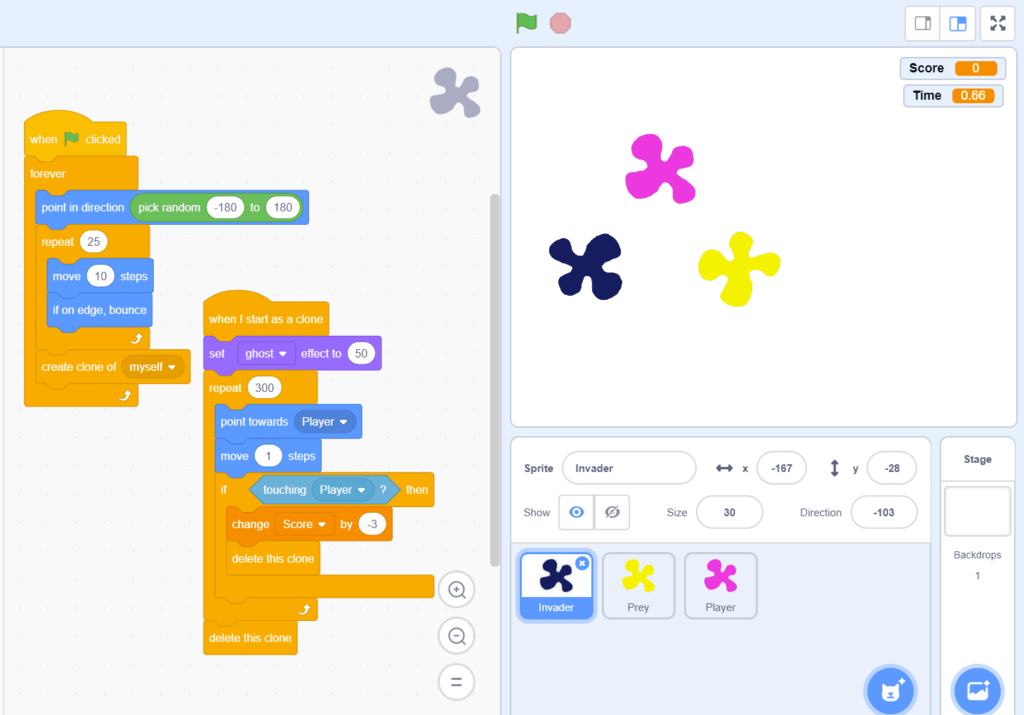
Vocabulary
- Twine
- online platform to create interactive stories
- Narrative
- spoken or written account of connected events (a story)
- Video game narrative
- there is no generally accepted definition, however, some consider the definition to simply be a representation of a series of events through storytelling, player interaction, music and 2D/3D imagery
- Non-player character (NPC)
- Often characters that give hints, reveal something about the story/world, express their opinion, etc. but are not playable
- Linear narrative
- A type of narrative that follows a very specific forward-motion set of events; it doesn’t allow the player to back track, skip ahead or influence the storyline at all
- String of Pearls narrative
- A type of narrative that creates game play as a general linear progression but can be influenced by the player
- Branching narrative
- A type of narrative that is central to the players choices. Allows the player to control the progression of the plot and the changes the ending depending on their choices
- Amusement park narrative
- A type of narrative that allows the player to control the story through interaction but rather than completing missions or side quests, the player finds these branches through interacting with the NPC that is attached to that particular storyline
- Cutscenes
- a minimally interactive scene that develops the storyline
- Hybrid game
- A game created from a mix of different game styles/types
- Side quests
- Small storylines that may be related to the world, culture, lore, history, etc. or explore backstories of some characters
Materials
- Writing material: paper, pen or word processor, Twine
- Scratch 3 or Scratch online
- “Colour Hunt” game
Non-Computer Activity
To begin, it might be beneficial to understand the basics of storytelling before diving into writing video game narratives. Feel free to complete the “Story Storm” Storytelling Activity written by Tanner Big Canoe. It is a great activity to understand the basic elements of storytelling and includes a simple template to begin organizing your ideas!
It’s important to understand that although narratives are prominent in video games, not every game has a narrative. Simply, not every fun game needs to have a narrative; the act of playing the game for what it is, is enough. For example, the very popular game Minecraft has no plot or story to tell, rather, it’s purpose is for users to build whatever they want using their creativity and therefore is open to individualized narratives that the player creates as they build (or just build cool things for the sake of it). Another example is the popular NHL and FIFA sports games; no narrative but very successful.
For games that do follow a narrative, there are many different types and some games are even a combination of different types of narratives. Chris Stone at Gamasutra has outlined 4 main types of narratives: linear, string of pearls, branching narrative and amusement park narrative.
- A linear narrative is a story progression that follows a very specific forward-motion set of events that doesn’t allow the player to back track, skip ahead or influence the storyline at all. Some popular games in this style include: Super Mario Bros, Sonic The Hedgehog, Prince of Persia.
- The string of pearls narrative model is when game play has a general linear progression but can be influenced by the player. This style includes a level of interactivity that gives the player freedom to choose different missions or side quests. Some popular games include: Final Fantasy and Uncharted,
- A branching narrative is a more complicated type of narrative which is central to the players choices. This narrative type allows the player to control the progression of the plot and changes the ending depending on their choices. An example is the popular PS4 (PlayStation 4) horror game, Until Dawn.
- The amusement park model is similar to the branching model and is a common strategy for open world games. It allows the player to control the story through interaction but rather than completing missions or side quests, the player finds these branches through interacting with the NPC that is attached to that particular storyline. An example of this is the popular game series Assassin’s Creed and Skyrim.
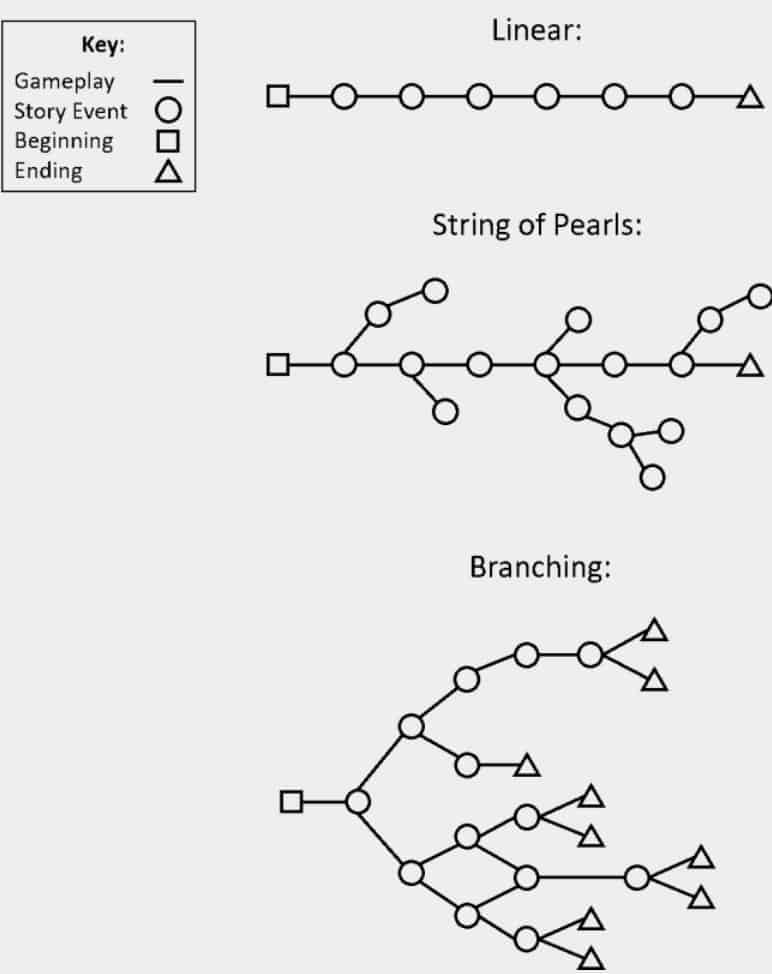
[This is a visual of the different types of narratives outlined in The Evolution of Video Games as a Storytelling Medium, and the role of Narrative in Modern Games by Chris Stone at Gamasutra]
Computer Activity
Video game narratives are a specific aspect of storytelling but what is unique to these narratives is the fact that there is lots of room for diversity in the type of storytelling. The beauty of video games is that there is something for everyone and this is where narrative is important. When you ask different people “what makes a great video game?”, you’re going to get very different responses because video game experience is so subjective. This allows for many different types of narratives to be accepted and successful, so be creative and write about something you enjoy!
Using a word processor or Twine, we will begin writing our own video game narratives!
E.M. Welsh has written a simple but effective guide to writing video game narratives (along with many other video game creation resources) which discusses the elements of video game narratives. According to Welsh, the two elements of a good narrative is the player-character dynamic and the interactive space/world the character is in. Welsh has outlined these steps to begin writing your story, however, recognizes that writing a story is going to be a much greater challenge than following a few steps. Simply, this is a great way to get started and begin practicing the process of narrative writing.
Step One: Outline the Major Storyline
The major storyline will depend on the type of story you choose to write (i.e. linear, string of pearls, branching) but the goal of this outline is to identify the story’s path along with the major plot points you want your character to experience. For those who want to write a linear story, your task will be less involved than those who choose to write a more interactive story; however, regardless of your choice consider starting with these areas:
- Note all the major events for each character
- List at least three different ending possibilities (if applicable)
- Make your outline as large/detailed as possible
Step Two: Decide the Type of Game
In order to effectively create a cohesive video game experience with your story, you must consider game mechanics and the different types of games out there (this is where video game experience comes in handy!). The type of game acts like a framework for your story. There are many types of games including hybrid games, so the more experience you have playing several different types of games the better, as this can help you decide how you want your game to be structured. Common video game types include:
- Action-adventure (e.g. The Legend of Zelda series)
- Role-playing games (RPG) (e.g. World of Warcraft)
- First-person combat (e.g. Goldeneye 007)
- Puzzles (e.g. Professor Layton series)
Step Three: Develop your World
For this part of planning, you may want to create your main character(s) first if you have a really clear idea but E.M. Welsh suggests beginning with the world, as it aids in character development. Developing the world may be the most exciting aspect of story creation because a lot of the emphasis in video games is dependent on the world the player experiences. Begin creating ideas about your world with these topics:
- History of the world
- Culture
- Lore
- Setting (time, location, etc.)
It may be helpful to brainstorm some aspects of human/real-world history, mythology, aspects of pre-existing stories/movies/games that interest you so that you can take inspiration to build your video game world.
Step Four: Create your Main Character(s)
If you’ve ever written an original story, you already have experience writing characters. Creating them for video games is similar, in that you flesh out who these characters are and what they value. The key for video game character creation is acknowledging and understanding the first-person relationship the player has with the character (i.e. the player is the character), in addition to narrative choices which change how the character may behave (i.e. non-linear storylines). A good place to start is to consider the prominent characters you want in your story:
- Protagonist or main character
- Antagonist or villain(s)
- Companion characters
Step Five: Create a Flowchart of your Major Story
Think of this step as creating a map for your story with the major pieces. This is where you will organize your work thus far in a flow-chart fashion as it will allow you to see the bigger picture. You can visualize your story and fill in plot points, update character stories, plan the progression of your story and locate where potential side quests would work. If you are planning to add side quests, don’t focus on the details of those during this step; simply mark on your flow chart where these may occur and focus on organizing your major story points. Below is an example of flowchart; this is to give you a visual of what yours may look like.
Step Six: Start Writing the Major Story
Think of this step as filling in the major pieces of your story with the fine details. Likely, you will create multiple iterations of your story during this stage as this is where different ideas will emerge – this is great and will help you land on the core direction to take your game! Focus on writing the details of your major story and worry about adding side quest details and interactivity later. You may choose to write/organize your story in whichever way is comfortable to you but if you’re not sure, here are some suggestions:
- Write your main story as a summary
- Start writing scene-by-scene
- Focus on cutscenes that have minimal interactivity
Step Seven: Add in Small Details: Side Quests, NPCs, etc.
Once you’ve planned and written the major story, this step is where you can add in the interactivity and the really fun elements of your game. How you begin writing these details may be dependent on the type of story you chose to write. If you chose a non-linear narrative, you may want to start writing alternate versions of your story depending on what the player chooses, alternate endings and how the player would achieve those endings. For those who chose a linear narrative, those elements won’t be applicable. Some common areas to start writing small details include:
- Non-player characters
- Often characters that give hints, reveal something about the story/world, express their opinion, etc.
- Side quests
- Small storylines that may be related to the world, culture, lore, history, etc. or explore backstories of some characters
- Items
- Interactive items that enhance the story such as letters, gems, books or any other significant object; these items can have a story behind them that adds to the overall narrative
Challenge
To apply your knowledge, I challenge you to use this lesson to create a very simple narrative for the “Colour Hunt” Scratch game we made in last week’s tutorial (keeping the game function the same). Additionally, you could write a more detailed narrative and remix the “Colour Hunt” game with new sprites, backdrops, sounds and basic function to tell your story!
Extra challenge: Write a brand new narrative using the knowledge you gained in this tutorial and create a Scratch game based on the narrative! Feel free to refer to our other lessons on Scratch and storytelling to help create your game:
Conclusion
Share your work with us! We want to see the awesome things you’re creating with Pinnguaq. Share online with us and tag @pinnguaq on Facebook, Twitter or Instagram for your work to be featured. Don’t forget to include the hashtag #LearnWithPinnguaq! Keep tuning into Pinnguaq for more lessons and fun activities!
Resources
- The Evolution of Video Games as a Storytelling Medium, and the role of Narrative in Modern Games by Chris Stone
- How to Write a Good Video Game Story by E.M Welsh
- Practical Guide to Game Writing by Darby McDevitt at Gamasutra
- How to Create Video Game Characters by E.M. Welsh
- How to Create a Video Game World by E.M. Welsh
- Interactive Storytelling with Scratch
- Scratch Remix: Make your own Game
- Hungry Shark Scratch Game
- Player Control in Scratch
- Player Control in Scratch: Basic Movement Techniques
- Creating a Word Monster Game Using Twine
- Mythology Using Twine (choose your own adventure story building)
- Last week’s tutorial
- Scratch website
- Scratch 3 Wiki page
